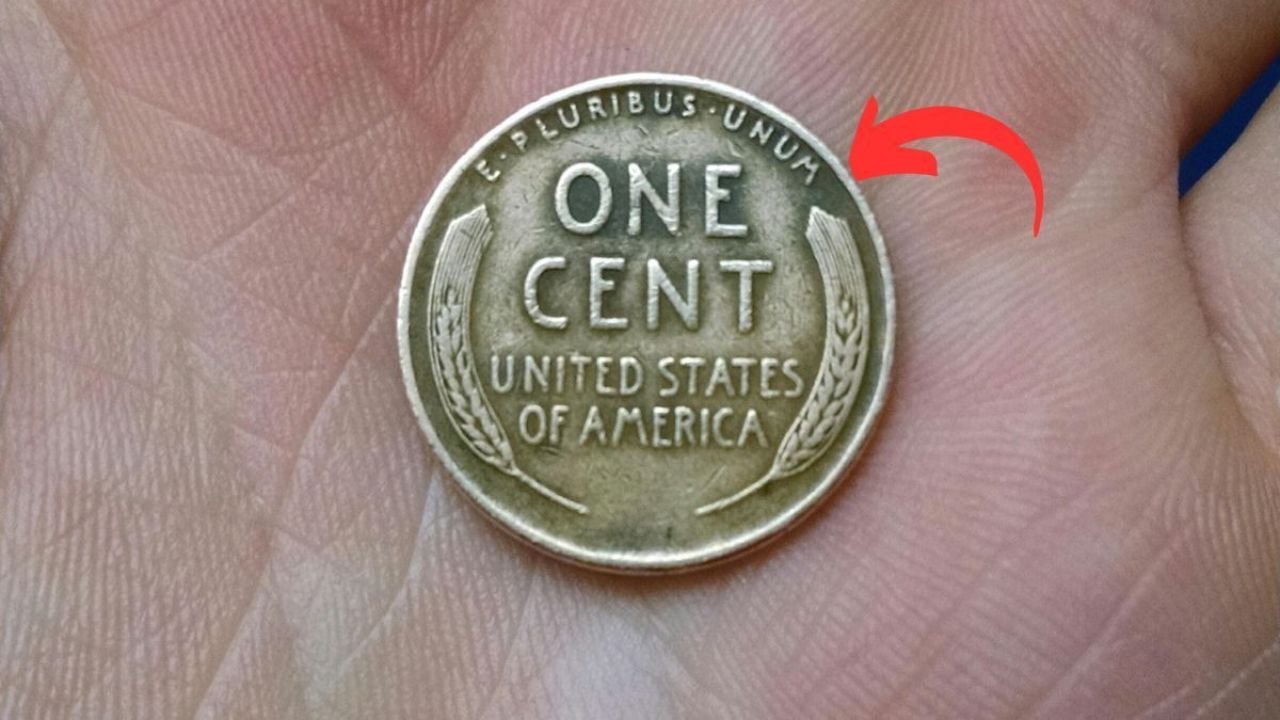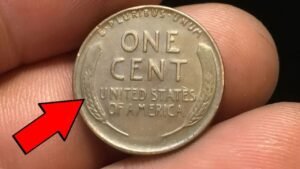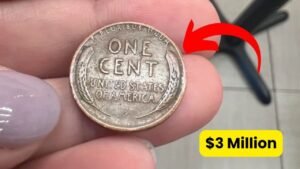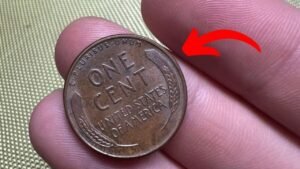A Historic Milestone in American Coinage
The Lincoln Wheat Penny, first minted in 1909, marked a bold shift in U.S. currency. Designed by Victor David Brenner to celebrate Abraham Lincoln’s 100th birthday, it was the first U.S. coin to feature a real person instead of symbolic figures like Lady Liberty. With Lincoln’s profile on the front and two wheat stalks framing “ONE CENT” on the back, this coin became an instant icon. Its nickname, “Wheat Penny,” reflects its rustic, agricultural design, symbolizing America’s growth and prosperity.
The 1909-S V.D.B.: A Rare Gem
Not all Lincoln Wheat Pennies are created equal. The 1909-S V.D.B. penny stands out due to three key factors: its limited mintage, unique design, and historical drama. Minted in San Francisco (marked by an “S” below the date), only 484,000 of these coins were produced—a tiny number compared to the millions churned out annually. The “V.D.B.” initials, representing designer Victor David Brenner, appear between the wheat stalks on the reverse. But here’s where it gets juicy: shortly after its release, public outcry over the prominent initials led the U.S. Mint to remove them, making the 1909-S V.D.B. a rare, short-lived variant.
Why Is the 1909-S V.D.B. Penny Worth $100,000?
Rarity Drives Value
With just 484,000 coins minted, the 1909-S V.D.B. is a numismatic unicorn. Most pennies from that era were produced in Philadelphia, with no mint mark, in much larger quantities. The low production in San Francisco makes this coin a collector’s dream. According to the Professional Coin Grading Service (PCGS), a 1909-S V.D.B. penny in uncirculated condition can fetch up to $100,000 at auction, with some pristine examples selling for even more.
Condition Is Everything
In coin collecting, condition is king. A 1909-S V.D.B. penny in circulated condition might be worth $700-$2,000, but one in mint condition—showing no wear and retaining its original reddish luster—can skyrocket to six figures. The Sheldon Scale, used by numismatists, grades coins from 1 to 70. A penny graded MS-65 or higher (near-perfect) commands top dollar. For example, a 1909-S V.D.B. penny sold for $168,000 at a Heritage Auctions sale in 2019, thanks to its exceptional preservation.
A Dash of Controversy
The “V.D.B.” initials sparked a firestorm in 1909. Critics called them too prominent, accusing Brenner of vanity. The Mint quickly redesigned the coin, removing the initials from later versions. This controversy adds a layer of historical intrigue, making the 1909-S V.D.B. a tangible piece of numismatic history. Collectors love coins with a story, and this penny delivers.
Could a $100,000 Penny Still Be in Circulation?
The Thrill of the Hunt
Here’s the exciting part: some 1909-S V.D.B. pennies might still be out there, hiding in piggy banks, old cigar boxes, or even your pocket change. Because these coins were circulated widely, it’s not impossible to stumble across one. In 2018, a New Jersey man found a 1909-S V.D.B. penny in a family coin collection, later authenticated and sold for $12,000. While not a six-figure find, it proves valuable pennies can surface in unexpected places.
Real-Life Discoveries
Stories of rare coin finds fuel the dreams of collectors. In 2010, a teenager in California discovered a 1943 copper Lincoln Wheat Penny (another rare variant) in his grandfather’s coin jar, valued at over $1.7 million. While the 1909-S V.D.B. isn’t quite that rare, its $100,000 potential makes every penny worth a second look. Numismatists estimate that thousands of these coins may still be unaccounted for, waiting to be found by someone with a keen eye.
How to Spot a 1909-S V.D.B. Lincoln Wheat Penny
Step 1: Check the Date and Mint Mark
Grab a magnifying glass and inspect your pennies. Look for the year “1909” and a small “S” mint mark below the date. No “S”? It’s likely a common Philadelphia-minted penny, worth far less. The “S” confirms it was made in San Francisco, a key indicator of rarity.
Step 2: Look for the “V.D.B.” Initials
Flip the coin over. Between the wheat stalks at the bottom of the reverse, look for the tiny “V.D.B.” initials. They’re subtle but distinct. If you see them, you might be holding a treasure. Be cautious, though—counterfeits exist. Genuine coins have a specific weight (3.11 grams) and a natural copper patina.
Step 3: Assess the Condition
Is the coin worn or shiny? Check for scratches, discoloration, or wear on Lincoln’s profile. Uncirculated coins with sharp details and a reddish hue are the most valuable. If you’re unsure, don’t clean the coin—cleaning can ruin its value by removing the natural patina or causing micro-scratches.
Step 4: Get It Authenticated
If you think you’ve found a 1909-S V.D.B. penny, don’t celebrate yet. Counterfeits are common, especially for high-value coins. Contact a reputable grading service like PCGS or the Numismatic Guaranty Corporation (NGC). They’ll verify authenticity and assign a grade, which determines its market value. For example, a coin graded MS-67 sold for $97,750 in 2021, per NGC records.
Tips for Protecting Your Potential Treasure
- Handle with Care: Always hold coins by the edges to avoid oils from your fingers damaging the surface.
- Don’t Clean It: Cleaning removes the patina and can reduce value by up to 90%. Leave it as is.
- Store Safely: Use acid-free coin holders or sleeves to protect your penny from scratches or environmental damage.
- Seek Expert Advice: Consult a professional numismatist or coin dealer before selling or appraising.
The Value of Coin Collecting
Beyond the potential for a big payday, collecting Lincoln Wheat Pennies connects you to American history. These coins circulated through the Great Depression, World War II, and the post-war boom, passing through countless hands. Each penny tells a story, from the controversy of 1909 to the wartime sacrifices of the 1940s. Plus, coin collecting is accessible—common Wheat Pennies sell for just a few cents, making it a hobby for all ages.
Valuable Lincoln Wheat Pennies to Watch For
| Year | Mint Mark | Key Feature | Estimated Value (Uncirculated) |
|---|---|---|---|
| 1909 | S, V.D.B. | Designer’s initials | Up to $100,000 |
| 1943 | None/D/S | Copper (error) | $100,000 – $2.3 million |
| 1914 | D | Low mintage | $1,000 – $10,000 |
| 1922 | No D | Missing mint mark | $500 – $10,000 |
| 1955 | None | Doubled Die | $1,000 – $2,000 |
FAQs About the Lincoln Wheat Penny
What makes the 1909-S V.D.B. penny so valuable?
Its value comes from its rarity (only 484,000 minted), the “V.D.B.” initials, and the San Francisco mint mark. Pristine condition can push its value to $100,000 or more.
How can I tell if my penny is real?
Check for the 1909 date, “S” mint mark, and “V.D.B.” initials. Use a magnet (copper pennies aren’t magnetic) and weigh it (3.11 grams). Professional authentication is essential.
Can I still find a 1909-S V.D.B. penny in circulation?
Yes, it’s possible! These coins were widely circulated, and some may still be in coin jars, old collections, or pocket change.
What should I do if I find a valuable penny?
Handle it by the edges, don’t clean it, and store it in a protective holder. Get it appraised by PCGS or NGC for authenticity and value.
Are all Lincoln Wheat Pennies valuable?
No, most are worth only a few cents. Only specific years, mint marks, or errors (like 1909-S V.D.B. or 1943 copper) command high prices.
Start Your Treasure Hunt Today
The next time you empty your pockets or sort through a jar of change, take a moment to check your pennies. That unassuming copper coin could be a 1909-S V.D.B. Lincoln Wheat Penny worth $100,000. With a bit of knowledge and a sharp eye, you might uncover a piece of American history—and a small fortune. So, grab a magnifying glass, start searching, and who knows? You could be the next lucky collector to strike numismatic gold.
Disclaimer: Coin values vary based on condition, market demand, and authenticity. Always consult a professional numismatist for appraisals. This article is for informational purposes only and not affiliated with Mahatma Gandhi College, Ashta, Sehore.




